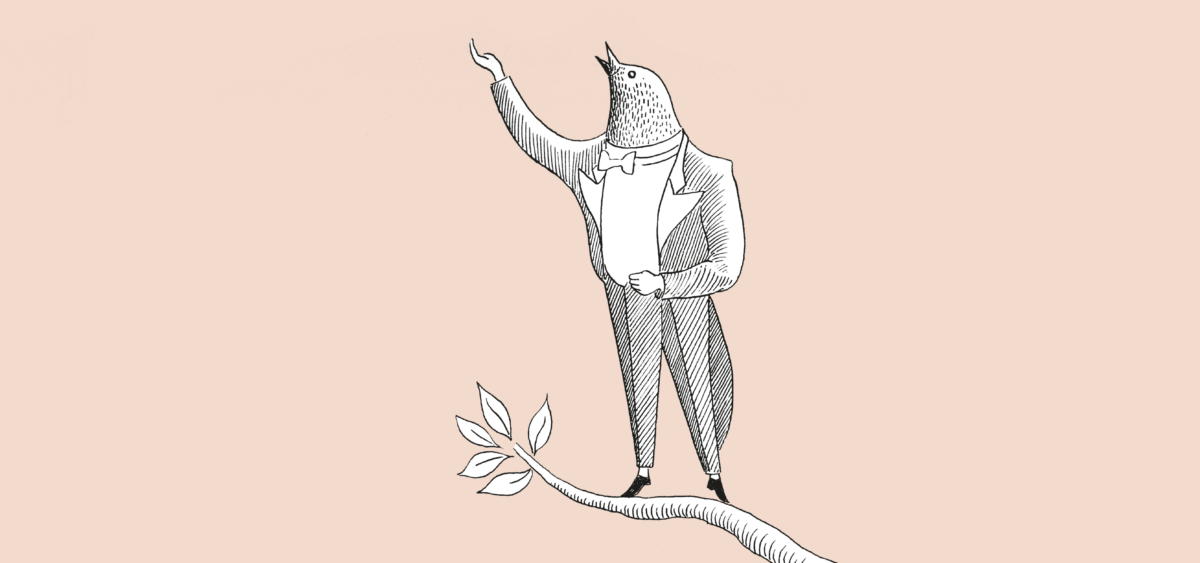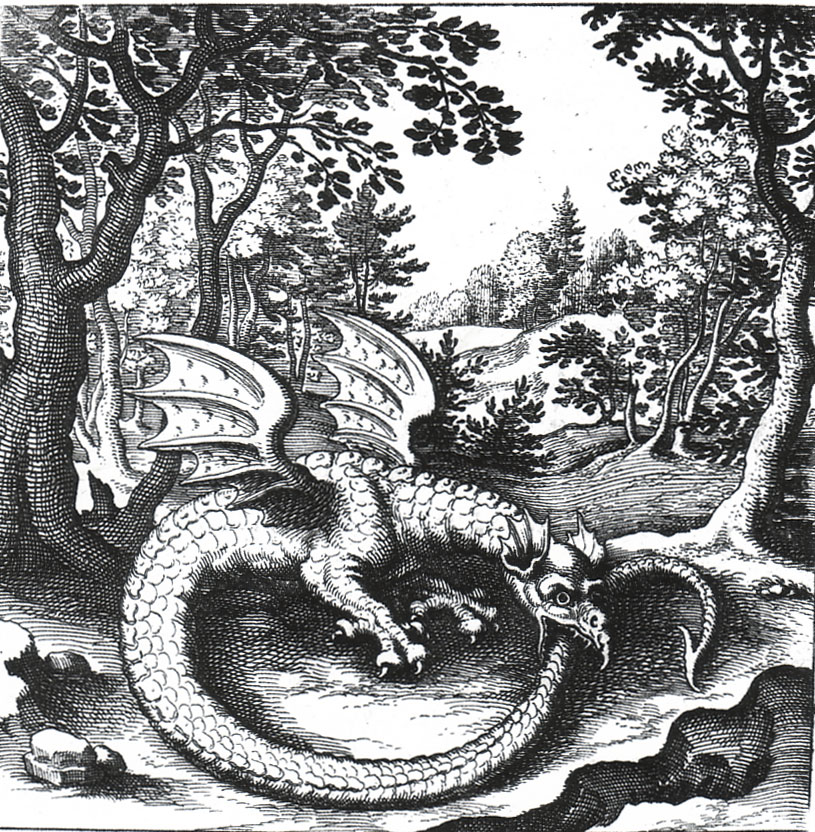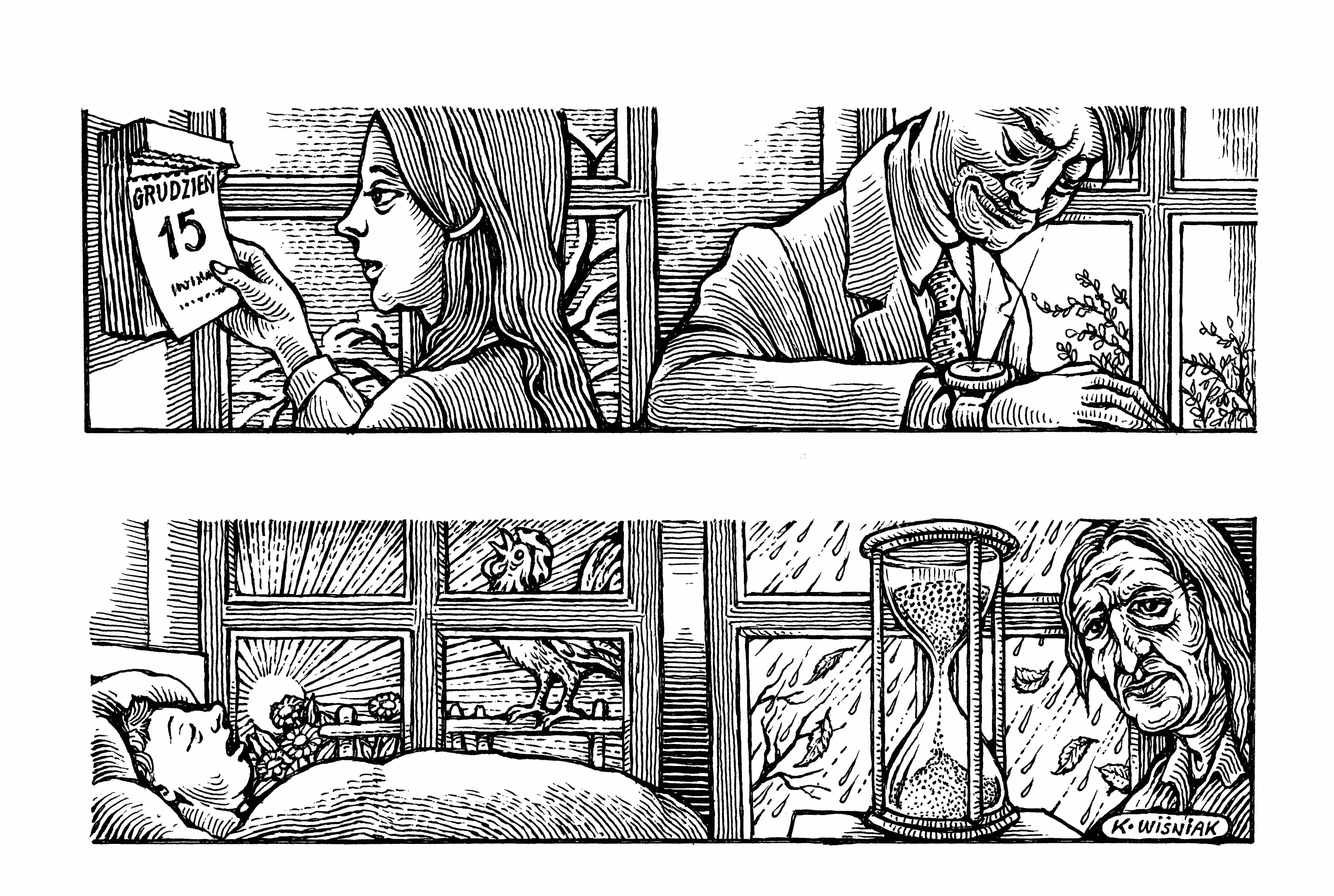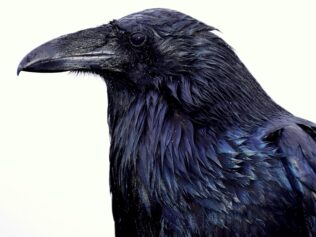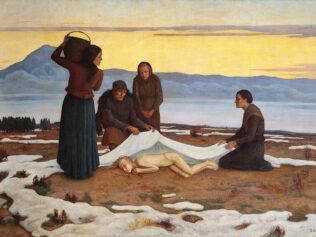
Just as some human languages are becoming extinct, so too the songs of various birds are dying out as they’re supplanted by other birds that are more aggressive and better adapted to life in urban spaces. Meanwhile, although identifying those songs is a tricky, time-consuming art, it can also become a wonderful, lifelong passion.
Kroo-lik, kroo-lik (which to a Polish ear sounds like the word for ‘rabbit’) – that’s the mysterious noise I heard one night, coming from outside my window, clearly loud enough to rouse me from my dreams. I grabbed the pencil and paper I’ve taught myself to keep on the bedside table in case of the need to jot down a sudden idea. As soon as I got up the next morning, I started investigating on the internet. I found nothing to tell me which bird says kroo-lik, so I decided to change my approach and to focus on listening to recordings of bird calls. One of them confirmed that what I had heard was a female tawny owl. If I were superstitious, I’d have been worried (“When the tawny owl shrieks, the devils rejoice” – that’s a saying cited by an ethnographic reference book called Śmierć w obrzędach, zwyczajach i wierzeniach ludu polskiego [Death in Polish Folk Rituals, Customs and Beliefs], which adds that in Germany they call this actually rather charming bird Totenvogel, meaning ‘bird of the dead’). But instead I started wondering about the noises made by various birds and how to write them down, because the field guides I consulted said that Mrs Tawny Owl doesn’t cry kroo-lik, but kyoo-vit.
Are you awake? Me too – cries the great horned owl
My first attempts at deciphering the signals on the ‘bird radio’ were quite frustrating. While walking in the forest, I’d often had the experience of hearing an unfamiliar call, or noticing one that had eluded me before then. I tried to commit them to memory by repeating them to myself quietly, but once I got home I usually found that a call which had sounded highly distinctive had vanished from my mind. Of course, I was familiar with Professor Jan Sokołowski’s field guide to birds (Ptaki ziem polskich [Birds of the Polish Lands], vols 1-2, Warsaw 1958 and 1972), whose “translations from bird language into Polish” set the standard notation and easily stuck in the memory. Thus, in Polish, the icterine warbler cries: bije-bije-bije, zbił-zbił-zbił, kto to widział, kto to widział (which sounds like “bee-yeh, bee-yeh, bee-yeh, sbeel-sbeel-sbeel, katoto-vid-yow, katoto-vid-yow”, literally meaning ‘hits, hits, hits, beat, beat, beat, who-saw-it, who-saw-it’); the little round long-tailed tit goes: dz dz serrp si titi (which is just a noise); and the partridge says: dziurryk, cerrwik, kirryk… (which sounds like “joorr-ik, tserr-vik, kirr-ik”, and is also fairly meaningless). The influence of this book – the cover of which features a hoopoe – on the imagination of generations of readers is mentioned in a poem by Jerzy Ficowski:
Dear Professor Sokołowski,
you weren’t an ornithologist
you were in fact a bird
of every species and variety
you taught us the ancient lore,
how to weave nests
and how to pronounce
avian dialects […]
Cheerily, cheerily, be we glad ‒ calls the robin
The verbs that describe bird-speech are onomatopoeic too. The cuckoo cuckoos, the sparrow chirrups, and the pigeon coos. The oriole’s song gives it its Polish folk name, which is ‘Zofija’ (pronounced ‘zoffee-ya’). Of course, this is a lovely, poetic association, but it’s also quite contrived. So I asked ornithologist Jacek Betleja how a bird-concert neophyte can learn to identify their individual voices. “Yes, Professor Sokołowski’s translation of the song of the great reed warbler is the best known among bird lovers: ryba-ryba-rak-rak [this sounds like “reeba-reeba-rruck-rruck”, and it means ‘fish, fish, crab, crab’], świerzbi-świerzbi-drap-drap [this sounds like “shvi-yezhby-shvi-yezhby-drup-drup”, and it means ‘itches, itches, scratch, scratch’], stary-stary-kit-kit-kit [this sounds like “starry-starry-keet-keet”, and it means ‘old man, old man, putty, putty’],” he says. “We ornithologists prefer to regard associations of this kind as anecdotal, though within ecological education these translations are a helpful learning tool for occasional observers of bird life.”
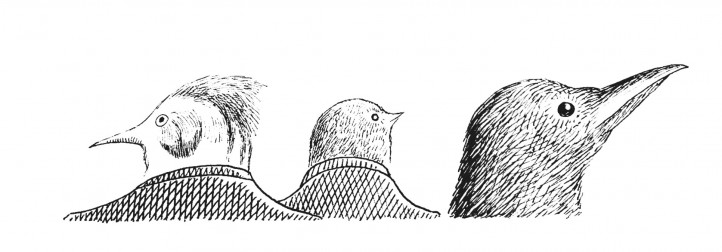
Right from the start an obvious but important truth is confirmed: practice makes perfect. “Walking about, observing and listening are the most effective but time-consuming methods of study. As a rule, we don’t memorize a bird call the first time we hear it,” the expert warns me, and adds that to begin with it’s worth taking a very careful look around while also listening intently. “It’s good to connect the sound and the image, which is never easy. The best way is to go on a walk with someone experienced who can help to identify the most common bird calls. Or at least with someone who has an ear for music. Those people usually find it easier to recognize bird calls and to identify them within the din that surrounds us,” says Betleja. He also adds that although it might seem obvious, it’s worth starting with the absolute basics ‒ in other words, the simplest calls ‒ because even there we’ll find traps waiting for us. “Anyone can recognize the cuckoo or the stork. The cuckoo has a loud, simple call, though it can be confused with the call of the collared dove, which is more muffled but has a similar rhythm,” he warns. Once we’re able to pick them out of the surroundings, we can try to build associations. But as with onomatopoeia, these can be misleading. “The call of the bittern is often compared to the sound of someone blowing into a bottle, or a cow mooing in the distance, whereas the little bittern’s call sounds very much like a dog barking. The cries of both these secretive herons can be heard close to farm buildings, and it’s very easy to confuse them with the voices of domesticated animals. The song of the black redstart sounds like the noise that results from pouring water onto a heated metal surface, though I for one don’t entirely have the same associations.”
Cricketer running to wicket, bowling – says the chaffinch
The most interesting of the song birds are only for advanced students. “The calls of the song birds are harder to identify, even the common ones, such as the great tit, the Eurasian wren or the nightingale. They have the anatomical capacity to emit complex sounds that are more difficult to memorize. Apart from song, they also have a large repertoire of communication and warning calls,” explains Betleja. I take a look in my old field guide. The singing male great tit repeats tsi-tsi-bay or si si trn, but watch out, it’s easily confused with the chaffinch (who says pink!). Meanwhile, the wren calls chek and drrr. To me, they’ve always prompted associations that come from a decidedly industrial age: the great tit reminds me of a metal dial or hinge, and the wren makes me think of an old telephone ringtone. The nightingale, which I’m lucky enough to hear often on warm spring days near my home, brings a piece of office equipment to mind, a printer or a laptop starting up… I haven’t a clue how to write it down. It looks as if there’s no universal key. “That’s why studying them demands concentration and observation. Another bird that sings, the largest, is the raven. It’s less commonly encountered, and it has a simple call, but it’s intelligent and it knows how to imitate other birds. Professor Simona Kossak had a raven called Korasek who learned to recite whole sentences,” says Betleja, and adds that the jay is also one of the song birds.
That’s one I happen to know extremely well. It’s a tough cookie of a bird – not afraid of the frost in winter; in summer, it steals cherries. It’s a chatterbox and a polyglot. It impersonates not just nightingales and thrushes, but also hawks, and sometimes things that aren’t even birds. For instance, it can do a perfect impression of a cat. I’ve sometimes stood beneath a tree, listening to a noise that’s like a door which needs oiling, or a very avant-garde piece of cello music. It wasn’t a breaking branch either, because after quite a while I saw those give-away russet and blue feathers. I’m sure the jay is always managing to gull people… The call of the hoopoe, by contrast, though rather rarely heard, can also be mistaken for the sound of a completely different creature. In Professor Sokołowski’s guide, we read that its ududud sounds like a dog barking in the distance.
“Occasionally someone who’s trying to identify a sound is convinced they’re hearing an unfamiliar bird, but it turns out to be a creaking swing, or a recording to scare birds away, which is being broadcast in an open space. People sometimes send me requests to identify this sort of thing,” says Betleja, once again confirming my view that recognizing bird calls is a real puzzle.
A little bit of bread and no cheese – cries the yellowhammer
Luckily new technology is coming to our aid. “Now you can visualize the call of a bird by means of a sonogram, which is a graphic recording of the sound, available on a website where there are tens of thousands of bird calls from all over the world,” Betleja consoles me. A sonogram is particularly useful for visual thinkers – the different calls have different ‘appearances’ that can help you to form associations. Betleja recommends in particular the xeno-canto website (where you can find all the birds in the world), and the Collins Bird Guide smartphone app (which makes life easier in the field). “But above all, make your own recordings and ask about them. That’s also useful for developing public knowledge. The bioacoustics experts from the institute in Poznań are now studying the dialectical differences between the yellowhammer’s calls on a continental scale, all thanks to bird watchers from various countries who’ve been making recordings and posting them online,” he says.
As we’re on the topic of bioacoustics, I take the opportunity to ask if bird calls change along with our environment. It’s something we might expect in an era of such rapid and drastic transformation. “At present, the standards are based on digital registration and analysis by the appropriate programs. That’s why they’d have been easier to notice if the same sort of equipment had been used twenty to fifty years ago,” says Betleja. He adds that what we can pick up with our own ears is a difference in the audiosphere, meaning the sound space within cities. Some bird species that used to be common are disappearing at a rapid rate, while others are appearing. The dear old sparrow will soon be a rarity (“generally familiar and common in the proximity of buildings, it has an alluring call and song: tsilp shelp errr tetet”, according to Professor Sokołowski’s guide).
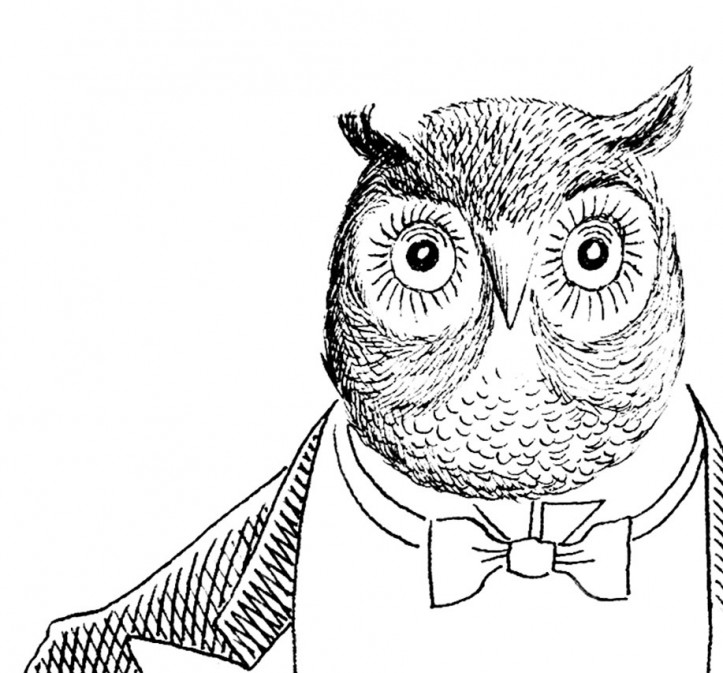
“There used to be plenty of sparrows in London. Ten years ago, I was told that if I could spot a sparrow in Hyde Park and take a picture of it, I’d win a case of whisky,” says Betleja. “Naturally, I failed. I’ve also done some research in Gliwice, among the closely-set buildings surrounding the marketplace. In the past twenty years, the number of sparrows has decreased ten times over. Now, in an area covering fifteen hectares, there are only ten pairs, but when I started there were more than a hundred.”
It makes you want to quote the poet Konstanty Gałczyński: “Love the little sparrows, girls, for Christ’s sake love them” – because they’re about to disappear! Why is that? “There’s no hard proof of the specific factors causing this state of affairs, but there are definitely several at play,” explains Betleja. “The rise in the population of birds of prey, the changing structure of an ever more concrete-covered space, fewer lawns. That means fewer insects for the sparrows to feed their chicks. It’s also harder for them to get food in the form of scraps, now that rubbish is put in plastic sacks. Another thing that has a negative effect is air pollution, especially from car exhaust fumes. Finally, because buildings are insulated and niches or holes in the walls have been closed, a lot of nesting sites have gone. Luckily, in Silesia most of the insulated buildings already have nesting boxes fitted for swifts, which sparrows are using too,” explains Betleja. As we can see, we don’t need dictators with crazy ideas for sparrows to disappear (in the 1960s, Mao Zedong issued a decree for China’s sparrows to be destroyed because they were eating the grain, which led in turn to a plague of locusts and famine). All we need is more concrete, smog and plastic.
Nowadays we can hear more pigeons, but they’re not all the same ones. There’s a non-stop war between the three most common species, and if it has ever occurred to you that you rarely hear the melancholy hu huuu-hu of the Eurasian collared dove anymore, your instinct is right. “Three species, the urban pigeon, the collared dove and the wood pigeon compete for food and nesting sites. The wood pigeon is the most successful. Twenty-eight years ago, they started nesting in the centre of Gliwice,” says Betleja, “and now we have more than a dozen nests.” Earlier, a similar rise in the number of wood pigeons was confirmed in Wrocław on a much larger scale. Gulls are gradually making their way inland as well. “The black-headed gull is taking advantage of the availability of food close to people – it eats the food that’s meant for ducks and swans, because it’s faster than they are. Another species that’s on the increase is the Caspian gull, which feeds on rubbish heaps. Several thousand of these birds are able to congregate there. The species that know how to recycle waste are the ones that do best,” he says. So, ever more often we’re seeing “gulls drawing figure eights” (as in the song by Irena Santor), and hearing their shrill cry, ke ke pi-eee, miles away from the sea.
Whither I fly, whither O whither I flee – sings the skylark
Learning to identify bird calls isn’t easy, on top of which, as we can see, the available information is always changing. So is it worth doing all that listening? Of course it is. “People find birdsong relaxing and reassuring, because over thousands of years they have learnt that when the birds sing they are safe; it’s when birds stop singing that people need to worry. Birdsong is also nature’s alarm clock, with the dawn chorus signalling the start of the day, so it stimulates us cognitively,” writes the sound and communication expert Julian Treasure. And Eleanor Ratcliffe, a researcher at the University of Surrey, concludes that listening to birds has a positive effect on our mood – on the condition that the prevalent voices are not sharp, but tuneful (in other words, the rising number of gulls doesn’t bode well for us). This knowledge has been put to practical use by the designers of relaxation zones at Amsterdam’s Schiphol airport, where you can gaze at plants and unwind to the trilling of birds. There’s a similar soundtrack at… the cat café in Warsaw, but curiously, it doesn’t bother the cats at all.
In fact, people can gain extra satisfaction merely by studying bird calls. “The amount of energy you have to use in order to recognize bird sounds means that you remember them for a very long time,” says Betleja encouragingly.
P.S. While working on this article I listened to at least ten files on YouTube of recordings of bird calls, each several hours long. (The sub-headings are from Aaaaw to Zzzzzd, The Words of Birds by John Bevis.)


